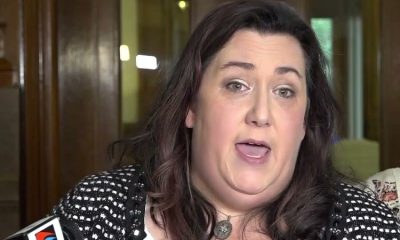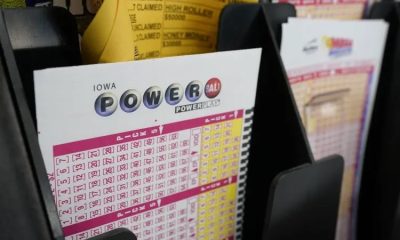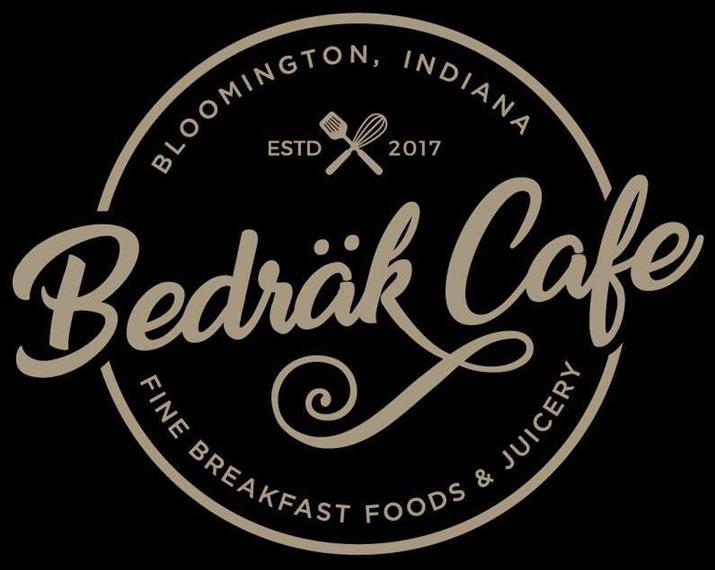Local News
The Center for Recovery’s request to rezone West 1st Street is a result of the Bloomington map revision in 2021

Bloomington, Indiana – In the heart of Bloomington, the Indiana Center for Recovery hopes to construct two group home facilities: one on the north side of West 1st Street and the other on the south.
Patients with mental and behavioral health issues as well as substance use disorders would be treated in these facilities.
However, the land, which is now zoned R3 (residential small lot), would need to be rezoned to be used to treat patients in a group home. The land was formerly zoned for mixed-use healthcare (MH), but the Center for Recovery wants it rezoned to this district.
As part of the city’s 2021 zoning plan adoption, the property was rezoned from MH to R3.
At its meeting on Monday, January 8, Bloomington’s plan commission will consider the rezoning proposal for the first time. Following Monday’s hearing of the staff report, a public discussion, and public comment, the plan commission will probably vote to advance the request to a mandatory second hearing in February.
The plan commission appointee of the Bloomington city council needs to be resolved before the time of the commission meeting in February. Ron Smith filled that position the previous year, however, he was not re-elected. The appointment could not be made until Wednesday, January 10, during the city council’s first meeting of the year.
Any council member’s interest in being appointed by the council to the commission may be determined by their presence at the meeting on Monday.
According to the Center for Recovery’s legal viewpoint, the 2021 modification amounted to a “spot zoning” of the land. A situation when property is illegally singled out for different treatment from neighboring land is referred to as “spot zoning.”
In addition to arguing that the 2021 rezoning of the site was illegal, The Center for Recovery has informed the plan commission in a letter sent by its attorney that its patients are members of a protected class. This is a group of individuals with impairments who also have mental or behavioral health issues and substance use disorders, as described under the Americans with impairments Act and the Fair Housing Act.
The building on the north side of the street is described as follows by the Center for Recovery:
• North first floor: 2 one-bedroom units, 7 two-bedroom units, 4 offices and 2 meeting rooms.
• North second floor: 3 one-bedroom units and 8 two-bedroom units
• North third floor: 3 one-bedroom units, 8 two-bedroom units
There are 31 units and 54 bedrooms overall for the building on the north side of the street, along with 4 offices and 2 meeting spaces.
The building on the south side of the street is described as follows by the Center for Recovery:
• South first floor: 4 one-bedroom units, 2 two-bedroom units, 1 office, and 2 meeting rooms.
• South second floor: 4 one-bedroom units and 3 two-bedroom units.
With one office and two meeting rooms, the building on the south side of the street has a total of thirteen units with eighteen bedrooms.
The land lies west of the location of the former IU Health hospital, which the city is developing into the Hopewell neighborhood.
Although it doesn’t explicitly say so, the staff report on planning and transportation suggests that the plan commission hold the second hearing, hinting at a potential staff recommendation opposing the rezoning.
According to the staff report, the land will be used for “one that can be beneficial to the community and city as a whole.”
However, the staff report raises concerns about whether the city’s comprehensive plan supports the desired rezone of that particular property. The suitability of rezoning to enable larger constructions “deeper within a neighborhood” as opposed to on a busier thoroughfare is questioned in the report.
The staff report lists owner-occupied housing as one of the objectives of the city’s comprehensive plan, which is different from what the Center for Recovery’s initiative suggests when it comes to rezoning the region.
The staff report states:
While multi-family style buildings are allowed and appropriate in some locations within the former Hospital area, the location of these properties for a Medical zoning district that is not on a high-volume street and buried within a neighborhood may not be an appropriate location for this higher-intensity zoning district.
It is the city council that has the final say on rezoning requests. Even if the plan commission forwards the requested rezone to the city council with a negative recommendation, the council could choose to grant it.
-

 Indiana2 weeks ago
Indiana2 weeks agoFree Fishing Days will let Indiana residents go fishing without a license
-

 Local News2 weeks ago
Local News2 weeks agoOfficials from Indiana meet with parents to discuss issues with the attendant care program
-

 Local News2 weeks ago
Local News2 weeks agoA Tesla Model S is the first completely electric patrol car revealed by the Vanderburgh County sheriff
-

 Local News2 weeks ago
Local News2 weeks agoCouncil of Bloomington overrides mayor’s veto of resolution calling for a ceasefire in Gaza
-

 Local News2 weeks ago
Local News2 weeks agoThe positions of the Republican gubernatorial candidates regarding taxes
-

 Local News2 weeks ago
Local News2 weeks agoAttorney General Rokita offers her opinion on the use of pronouns at work
-

 Indiana1 week ago
Indiana1 week agoWoman from Aurora detained for assaulting a child
-

 Local News1 week ago
Local News1 week ago$50,000 Truck stop sells Powerball tickets that are about to expire






Leave a Reply